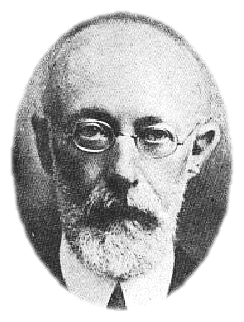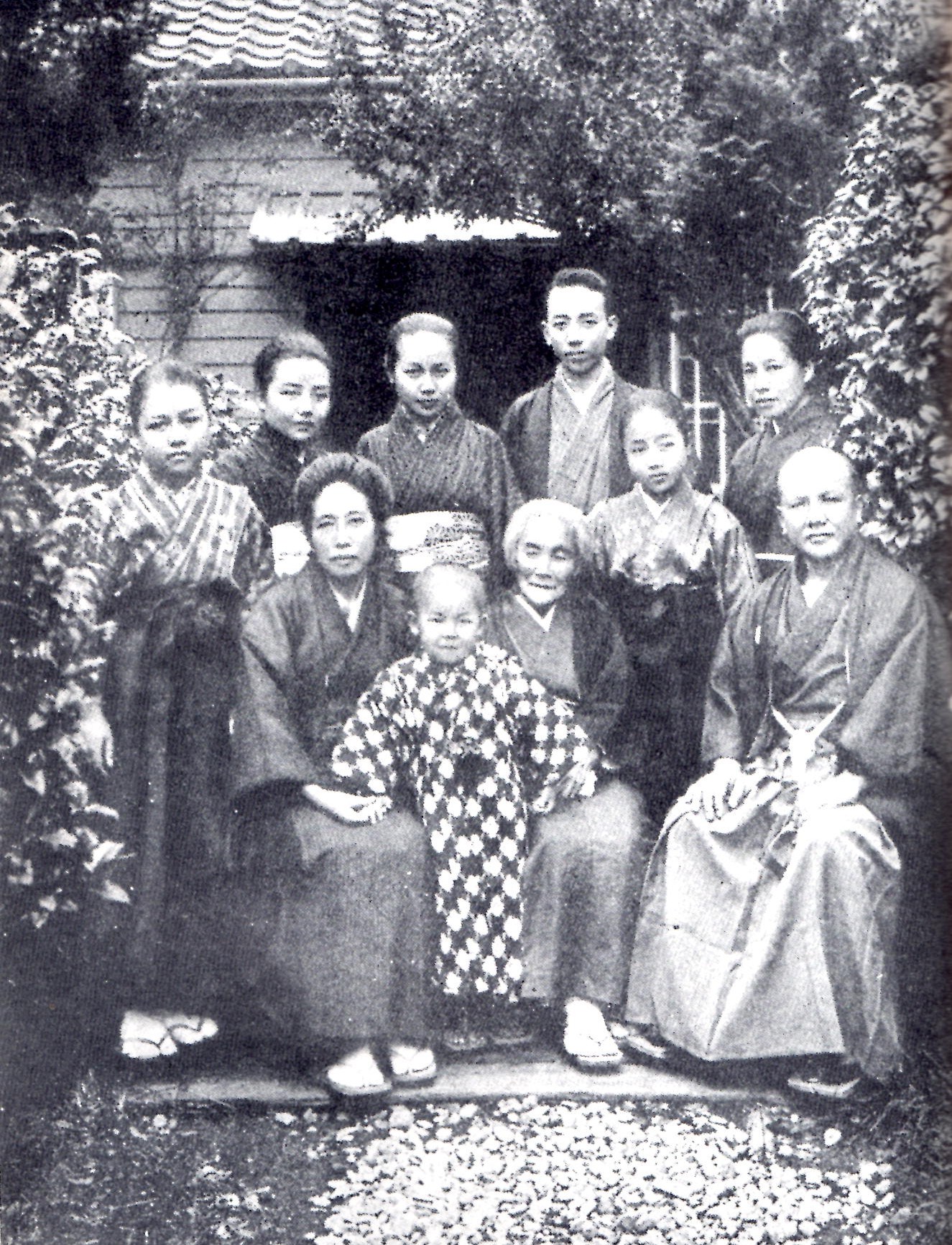Juji Nakada Inspires OMS
Khen LimVintage postcard showing the Oriental Missionary Society (Image source: picclick.co.uk)
Like the few Japanese men who knew Christ during the formative
years, Juji Nakada’s heart was wrenching from despair for his own country
Japan. In fact, following his death in September 24 1939, Japan dealt a heavy
blow to Nakada’s resistance against ancestor veneration at Shinto shrines and
as a result, 71 of his pastors were arrested of which 14 were sentenced.
In the end, defence lawyer Takurõ Fujikawa argued that the defendants were ‘mistakenly following’ Nakada’s interpretation of biblical eschatology and the salvation of the Jews. Fujikawa maintained that because of his beliefs, the defendants found themselves at odds with the Japanese government and recommended that members of his church stay away from Nakada’s literal interpretation.
Born
in Hirosaki, Japan on this day one-hundred and forty-six years ago, Juji Nakada
was only four years old when his father, a low-ranking samurai, died, leaving
the whole family destitute. However for whatever reason, Nakada was brought up
the Methodist way, his education was in the Methodist Too College (now Daimyo
School) and when he was eighteen years old in 1888, he furthered his studies at
the another Methodist institution, the Tokyo Eiwa Gakko (now Aoyama Gakuin
University).
Juji Nakada (standing) with Katsuko Odate (seated) (Image source: suggest-keywords.com)
Nakada married Katsuko Odate, a fellow Methodist minister, in 1894
and thereafter, left for Yakumo, a small village in Hokkaido, where he
commenced his working life as a Methodist missionary before he went on to serve
in Otaru, Etorofu Island and also Odate in the Akita Prefecture.
Tragedy
struck Nakada when his first son died and his wife was taken very ill. His son’s
death traumatised him enough to doubt his faith. Even though by then he was a
successful evangelist, Nakada’s spirit was wanting. The heartbreaking tragedy left
him feeling all at sea and so he decided that he needed to learn more about
Christ by going to America to “get filled
with the Holy Spirit.” Before he left, he said to Katsuko, “If I don’t find the power of the Holy
Spirit, I’ll come back, leave the ministry and become a dentist.”
Soon after, in 1896, a 26-year-old Nakada went to Chicago, Illinois
and, upon invitation, enrolled himself at the Moody Bible Institute. By then,
he had already heard of Dwight L Moody’s powerful reputation as an evangelist
and had wanted to learn from him. Eventually he too came to be known as the
‘Dwight Moody of Japan’ as he set about wanting to establish a similar
institute and recruit pastors nationwide at home.
Charles Cowman (Image source: cdn.org.tw)
It was while studying at Moody that he became friends with two
married couples one Sunday through the Grace Methodist Episcopal Church. They
were Charles Elmer and Lettie Burd Cowman as well as Ernest and Julia
Kilbourne. Cowman was a Christian from the age of thirteen but had backslid for
ten years. Once restored to his faith, Cowman said, “The room became glorious with the presence of the Lord…” and subsequently
he devoted the next six months of his time to converting as many as
seventy-five of his co-workers including the very first man whom he shared the
Gospel with and that was Kilbourne himself.
Also it was during his time at Moody that Nakada too met up
with theologian Rev A.M. Hills who gave him a copy of his book called,
‘Holiness and Power.’ Hills’ influence together with R.A. Torrey was measurable
enough for Nakada to experience ‘entire sanctification’ in 1897. Cowman’s wife,
Lettie, wrote:
“As he earnestly sought
to be filled with the Holy Spirit, it was not long until his hungry heart was
satisfied. Having come so definitely into the blessings, he soon felt strongly
impressed that God would send him back to his people to preach full salvation
to them.”
Two years after he enrolled at the Moody Institute, in
September 1898, Nakada returned home to Japan but along the way, he stopped by
in England where he met up with Barclay Fowell Buxton, one of the leaders of
the English holiness movement as well as visit the tomb of the late John Wesley.
In the following year of 1899, the Methodist order appointed him as travelling
evangelist even though by then, his preaching was beyond the denomination.

Ernest Kilbourne (Image source: wikipedia.org)
Back in Chicago, the Cowman and Kilbourne families had come
together to form the Telegraphers Missions Band and from there, they resolved
to meet Nakada’s financial needs. At the same time, he invited Cowman and his
wife to join him in evangelising the Japanese. In that same year, once he was
back in Japan, he began the Japan Holiness journal called Tongue of Fire, which he edited until his death.
In 1900, Nakada finally left the Methodist church and went on
to establish the Central Gospel Mission (aka Chuo Fukuin Dendokan) in the
suburb of Jinbo-cho in central Tokyo. On February 1 the following year, the
Cowmans arrived in Japan to join Nakada’s efforts as missionaries of the
Pilgrim Holiness Church.

Juji Nakada (Image source: wikipedia.org)
Together they founded the Tokyo Bible Institute (later
called Tokyo Bible Seminary) with Nakada acting as the inaugural president. In
1902, the Kilbournes with their three children arrived and became a collective
mission group tasked with establishing “self-supporting,
self-governing and self-propagating churches” based on the William Taylor
model.
Three years after it opened, in 1903, the Central Gospel
Mission had outgrown its hall and needed to shift to larger grounds.
Eventually, they found a new building in Kashiwagi, Yodobashi-cho to move to
and in the following year of 1904, the name was changed to the Oriental
Missionary Society (Toyo Senkyokai or OMS in short) while Nakada became one of
its directors. With this change, their coverage became more expansive as they
took in all of East Asia including Korea and China.
On March 20 1911, Nakada’s wife Katsuko and child died. In the
same year, a leadership conflict in OMS arose between him and Cowman resulting in
a split, with the American taking over while Nakada took up the bishopric
appointment at the fledgling Japan Holiness Church (Nihon Seikyodan) with its
forty-six churches and a population of 1,500 members.
By 1923, with Nakada at
the helm of its evangelism, the Holiness movement grew to 2,783 members before
it exploded to as many as 19,523 ten years on in 1933. Before the year was over, Nakada remarried in
August, naming Ayame as his second wife.

Juji Nakada (back row) and his family, 1910 (Image source: commons.wikimedia.org)
Meanwhile in 1917, the
Oriental Missionary Holiness Church (Toyo Senyokai Horinesu Kyokai) was formed
with Nakada as its first bishop. He expressed its objective as a missionary
society to “propagate the complete
Gospel, that is, the Foursquare Gospel – salvation, holiness, the Second Coming
of Christ and healing – all over Japan.”
By the early 1930s,
Nakada, now a highly notable evangelist, had also established the first regular
Christian radio programme in Japan but by then too, he had become increasingly
controversial. Influenced in part by the commentaries of Wesleyan holiness
movement evangelist William B. Godbey. With that influence, Nakada became
convinced that Japan would be central to God’s plan in prepping the world for
the Second Coming of Christ.

Juji Nakada (seated right) and his family, 1922 (Image source: commons.wikimedia.org)
He even wrote a book on
the same subject, called Japan in the
Bible, which then proved the ultimate source of internal division that
almost broke apart all the wonderful things that had been achieved up till now.
In 1933 Nakada and his followers withdrew and went on to organise the Kiyome
Kyokai, a Japanese Holiness church.
On September 14 1939,
Nakada’s second wife Ayame died of uterine cancer and ten days henceforth, on
September 24, he died of intestinal tuberculosis. He was 68 years of age.
Useful resources (in
alphabetical order)
Bays, Daniel H. “Juji Nakada” in Biographical
Dictionary of Christian Missions, 486. Edited by Gerald H. Anderson. Grand
Rapids, MI: Wm B Eerdmans Publishing Company, August 1999. (available at https://www.amazon.com/Biographical-Dictionary-Christian-Missions-Anderson/dp/0802846807)
Beeson, Ray and Hunsicker, Ranelda Mack. The
Hidden Price of Greatness. Ventura, CA: Overcomers Ministries, Sept
2000. (available at https://www.amazon.com/Hidden-Price-Greatness-Ray-Beeson/dp/0974826901)
Bundy, David. “OMS International,” 711. In Evangelical
Dictionary of World Missions. Edited by A. Scott Moreau. Grand Rapids, MI:
Baker Academic, Jan 2000. (available at https://www.amazon.co.uk/Evangelical-Dictionary-Missions-Reference-Library/dp/0801020743)
Goodman, David G. and
Masanori Miyazawa. Jews in the
Japanese Mind: The History and Uses of a Cultural Stereotype (Studies of Modern
Japan). Lanham, Maryland: Lexington Books (Division of Rowman &
Littlefield), July 2000 (available at https://www.amazon.com/Jews-Japanese-Mind-Cultural-Stereotype/dp/0739101676)
Kostlevy, William. The A to Z of the Holiness Movement. The A to Z Guide Series.
Lanham, Maryland: Scarecrow Press (a division of Rowman & Littlefield).
April 2010 (available at https://www.amazon.com/Holiness-Movement-Guide-William-Kostlevy/dp/0810875918)
McCasland, David. Oswald Chambers: Abandoned
to God: The Life Story of the Author of My Utmost for His Highest. Grand
Rapids, MI: Discovery House Publishers, Sept 1998 (available at https://www.amazon.com/Oswald-Chambers-Abandoned-Author-Highest/dp/1572930500)
Mullins, Mark R. Ideology and Utopianism in Wartime Japan: An Essay on the Subversiveness
of Christian Eschatology. Japanese
Journal of Religious Studies Vol 21 Nr 2/3 Conflict and Religion in
Japan (Jun-Sept 1994). Nagoya, Japan: Nanzan University. pp.261-280 (available
at https://www.jstor.org/stable/30233528?seq=1#page_scan_tab_contents)
Mullins, Mark R. Christianity Made in
Japan: A Study of Indigenous Movements. Nanzan Library of Asian Religion
and Culture. Honolulu, Hawaii: University of Hawaii Press, November 1998
(available at https://www.amazon.com/Christianity-Made-Japan-Indigenous-Movements/dp/0824821327)
No comments:
Post a Comment